Table of Contents
TogglePRINCE2 is one of the most popular and widely used project management methodologies across industries. Organizations are using the PRINCE2 methodology in executing a project from the planning to the closure stage. This blog will give thorough details on the PRINCE2 Project Life Cycle.
Learn how you can use AI on the PRINCE2 methodology for running a successful project life cycle.
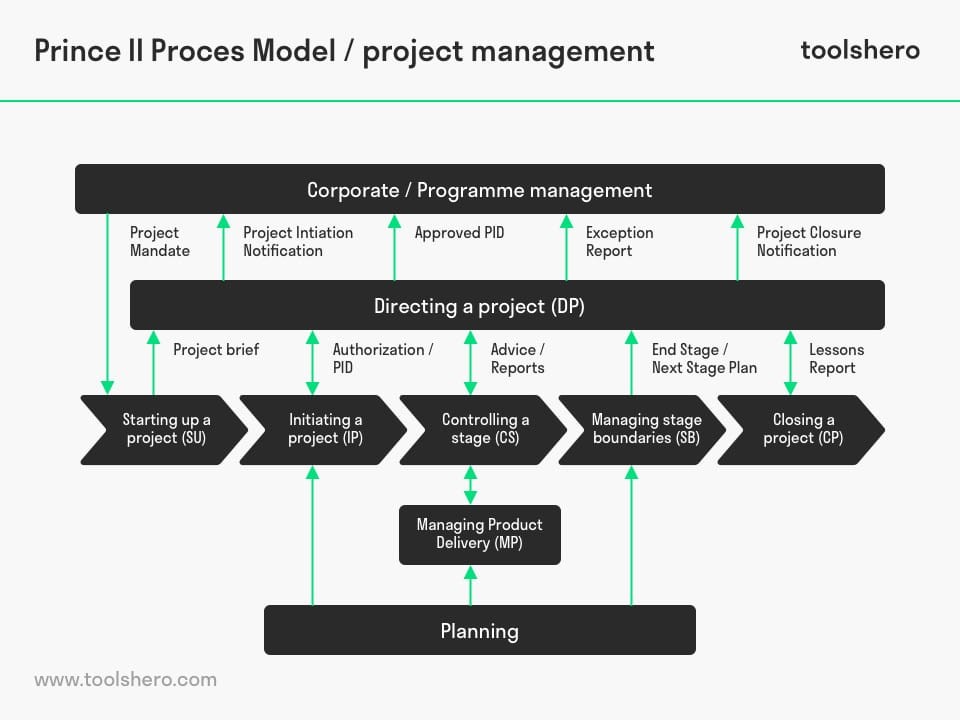
Image source: toolshero.com
Themes of PRINCE2 used in Project Management
The themes of PRINCE2 describe aspects of project management that should be exercised consistently as the project progresses through its lifecycle.
| Theme | Description | Answers the question |
| Business Case | The project begins with an idea evaluated for organizational potential. This theme covers developing the idea into a viable investment proposition and ensuring project management aligns with organizational objectives. | Why? |
| Organization | The organization initiating the project must assign work to managers responsible for guiding it to completion. As projects are cross-functional, regular line function structures may not be suitable. This theme outlines the roles and responsibilities necessary for effective project management within the temporary PRINCE2 project management team. | Who? |
| Quality | The initial idea is initially a broad outline. This theme details the development of the outline to ensure all participants comprehend the quality attributes of the products to be delivered. It also outlines how project management will ensure the subsequent delivery of these requirements. | What? |
| Plans | PRINCE2 projects advance with a series of approved plans. This theme, complementing the quality theme, outlines the steps to develop plans and the applicable PRINCE2 techniques. Plans in PRINCE2 align with the organization’s various levels, serving as the focal point for communication and control throughout the project. | How? How much? When? |
| Risk | Projects usually involve higher risk than stable operations. This theme focuses on how project management handles uncertainty. | What if? |
| Change | This theme outlines how project management evaluates and addresses issues that could affect the project’s baseline aspects (plans and completed products). Issues may include unexpected problems, change requests, or products not meeting specifications. | What is the impact? |
| Progress | This theme deals with the continual viability of plans. It clarifies the decision-making process for plan approval, monitors actual performance, and outlines the escalation process if events deviate from the plan. Ultimately, the progress theme decides whether and how the project should continue. | Where are we now? Where are we going? Should we carry on? |
Source: axelos.com
Seven Processes of the PRINCE2 Methodology
PRINCE, which stands for “PRojects IN Controlled Environments, is a linear and process-based process focusing on moving initiatives through predefined stages. It is a flexible process with seven stages in the PRINCE2 methodology. Based on these seven stages, project managers design sprints of projects and execute them strategically.
Let’s discuss the seven processes of the PRINCE2 methodology.
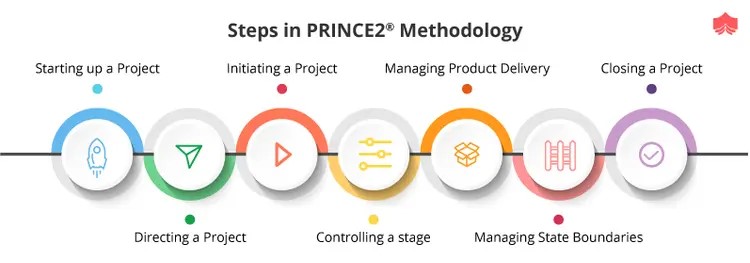
Image source: knowledgehut.com
1. Starting a project
This is the first phase where the project team makes a proper outline and designs the project using a project mandate, that explains what it involves and defines the business case. The team then shares the outline with the board members, who then check the itinerary thoroughly and approve if there are no recommendations. Once the project team gets the project outline confirmed, they work on defining the steps in elaborate and make a project brief.
Learn the Major Elements Required in Project Planning
2. Directing the Project
When the project team is ready with the project brief and has mentioned every sprint minutely, it reaches the project board. The project board reviews the outline, and in this step, there is a massive possibility that the board will add suggestions and recommendations to make certain changes to fit into the goals. This is mainly done to accommodate resources or time.
3. Initiating a Project
In this process, project team members are involved in planning timescale, budget, quality, scope, risk, benefits, and communication management strategies. They prepare an output containing all this information and it is known as a Project Initiation Document (PID). The project can officially begin once the project board fully approves the project plan the manager creates.
4. Controlling
Now comes the stage where project managers assign tasks to the project team to execute the project life cycle according to the sprints as planned. This involves getting approval for the project, checking how the project is going, reviewing progress at each stage, sharing important updates, addressing project problems, taking actions to lessen issues, and giving the necessary reports to the Project Board.
5. Managing Product Delivery
Once the project team has received the tasks, the project manager plays an integral role where the process mainly focuses on the customer or supplier environment. The project manager acts as a provider to achieving the goals of a work package that meets PRINCE2 quality expectations.
6. Managing Stage Boundaries
The project manager checks how the team is adhering to the outlines of the project plan, updates the plan and business case, and plans for the next steps. This detail helps the Project Board decide if the project is on track, approve the next steps, and review the updated plan. They do this at every stage to make sure the project is of good quality and sticking to the plan.
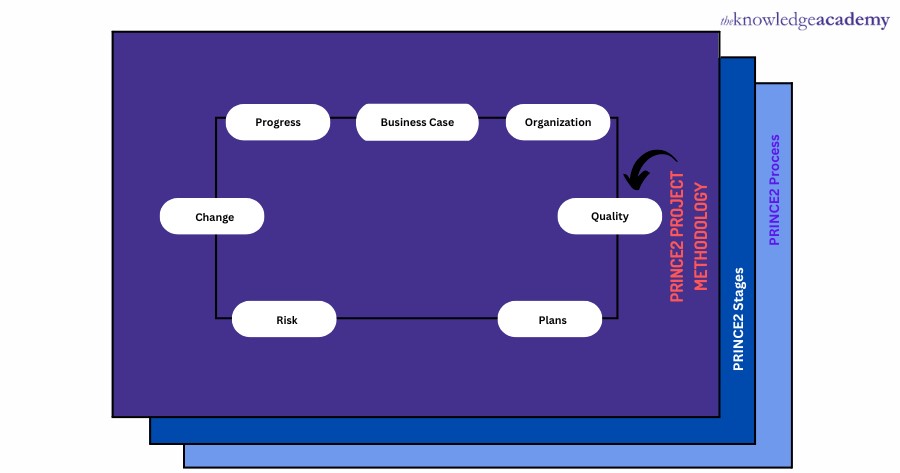
Image source: theknowledgeacademy.com
7. Closing
The project manager finalizes documentation, outcomes, and reporting before concluding the project lifecycle. Sometimes, Project Managers might plan for both scheduled and unexpected project closures, but it’s not always necessary. At the end of the project, the Project Manager needs approval from the Project Board, and the board gives the final approval after checking the project’s results.
Check out the latest Strategies for Project Management
Principle Roles in PRINCE2
To execute a complete project life cycle, three main roles play the most significant roles and responsibilities. The Project Board, the Project Manager, and the Project Team. However, other integral roles are also quite important to deliver the project successfully.
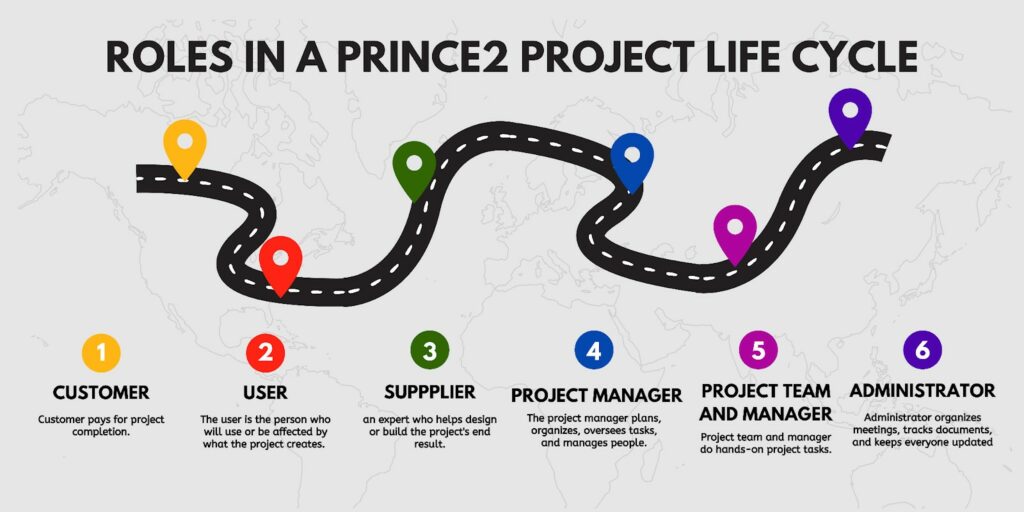
PRINCE2 Documents in a Project Life Cycle?
The image below will give a clear picture of the types of documentation that a Project Life Cycle in a PRINCE2 methodology generally contains.
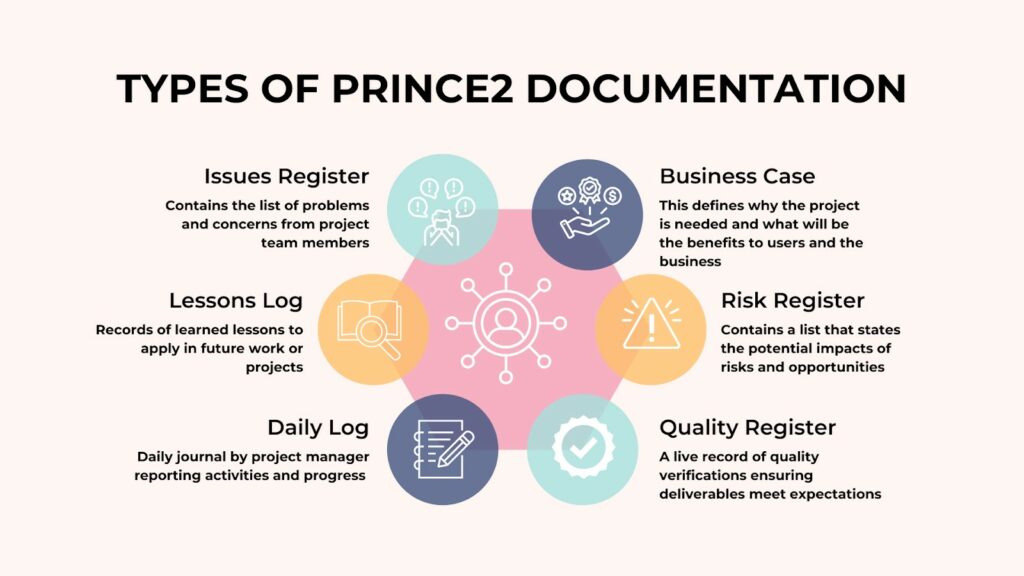
Benefits of using PRINCE2 methodology in a Project Life Cycle
Be it an organization or your business, using the PRINCE2 methodology has been quite beneficial to run a project life cycle efficiently. In the case of organizations, these are the following benefits of using the PRINCE2 Project Management path:
- PRINCE2 methodology facilitates a centralized approach to project management and it yields results in consistency, clarity, and efficiency for the project life cycle as a whole.
- Using PRINCE2 in project management also ensures business justification. It is an established approach to managing time, risk, cost, benefits, scope, and quality. This in turn ensures that the resource is justified and members are constantly evaluating the ROI.
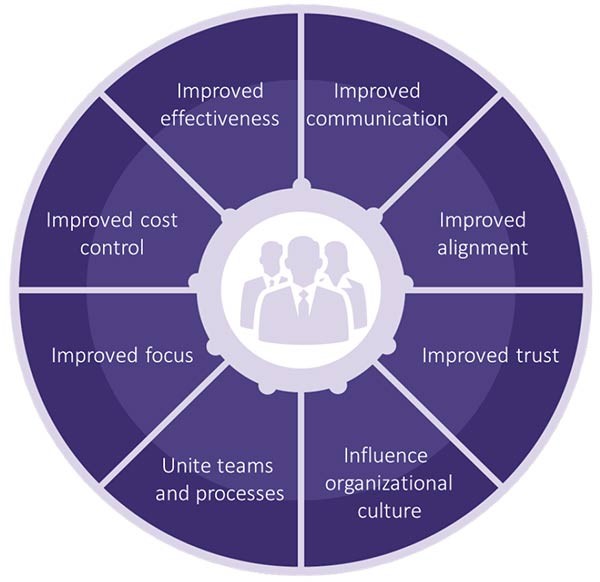
Image source: axelos.com
Concerning individuals, the benefits of PRINCE2 are:
- With the help of PRINCE2, project managers have an effective and efficient team structure, relevant planning, and manageable stages so that project team members do not go beyond the mentioned deadline and within scope and budget.
- There are no requisites to PRINCE2 certification which means project managers can pursue the certification at any point in their career, without waiting to reach a certain level of professional experience.
- PRINCE2 often acts like a tool to plan, delegate, monitor, and control work effectively. It also aids in the demanding role through health checks and a process-based approach aligned with the project lifecycle.
Read the Benefits of the PRINCE2 Certification for Individuals and Enterprises
Maintaining the Project Life Cycle with PRINCE2
A Project Manager uses PRINCE2 because the methodology is flexible and changes can be made during any stage of the project. PRINCE2® uses the Stage-Gate Model to take control of the overall project path. State gate Model often uses techniques to break down the entire project into manageable sections each of which is easily understandable and can be performed smoothly. At the end of every step of the project, there are three things that the team checks:
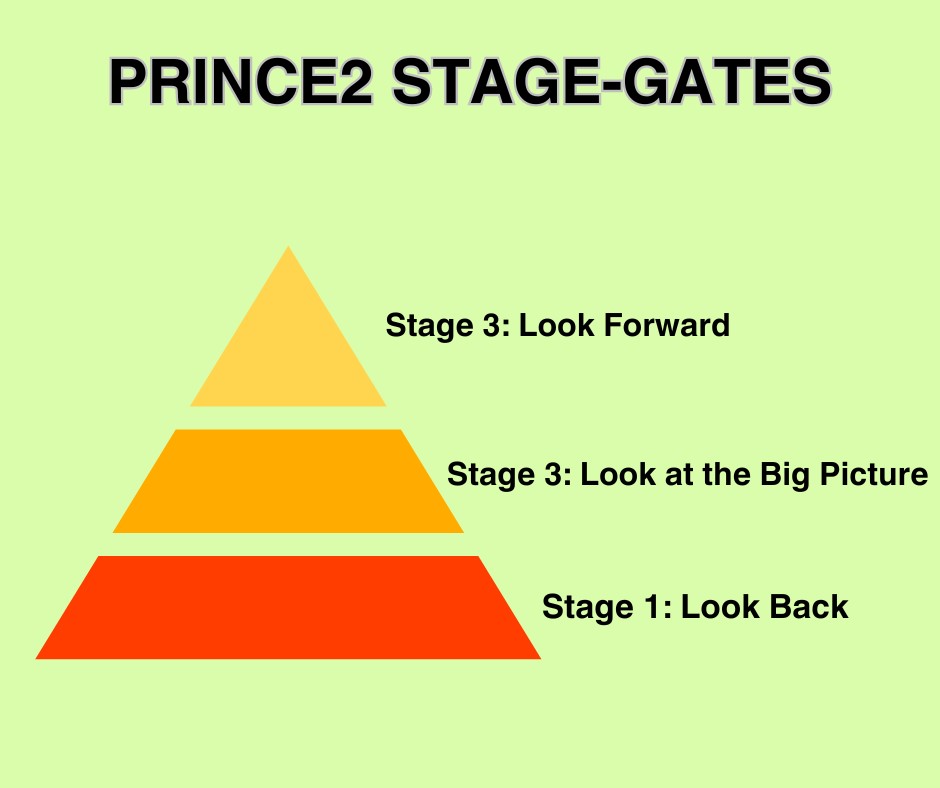
- Look Back– This assures the project team members that all the tasks assigned in that particular section of the project are done completely.
- Look at the Big Picture- The Project Manager reviews the project’s viability in a business case, checks the project plan’s schedule, and makes sure all risks are properly documented and are under control.
- Look forward- This step involves providing a Stage Plan for covering the work in the upcoming stage.
Conclusion
Business leaders and many organizations are rigorously using PRINCE2 methodologies in projects. There are multiple benefits where team members can approach for a change in the process or edit a bit of it. Besides, the PRINCE2 Project Life Cycle enables the breaking down of a project into multiple steps, and that ensures working on the project with better precision. If you’re interested in boosting your career in project management and want to be a pro in handling a project life cycle, you can refer to the latest PRINCE2 7th Edition Certification from a registered organization.
